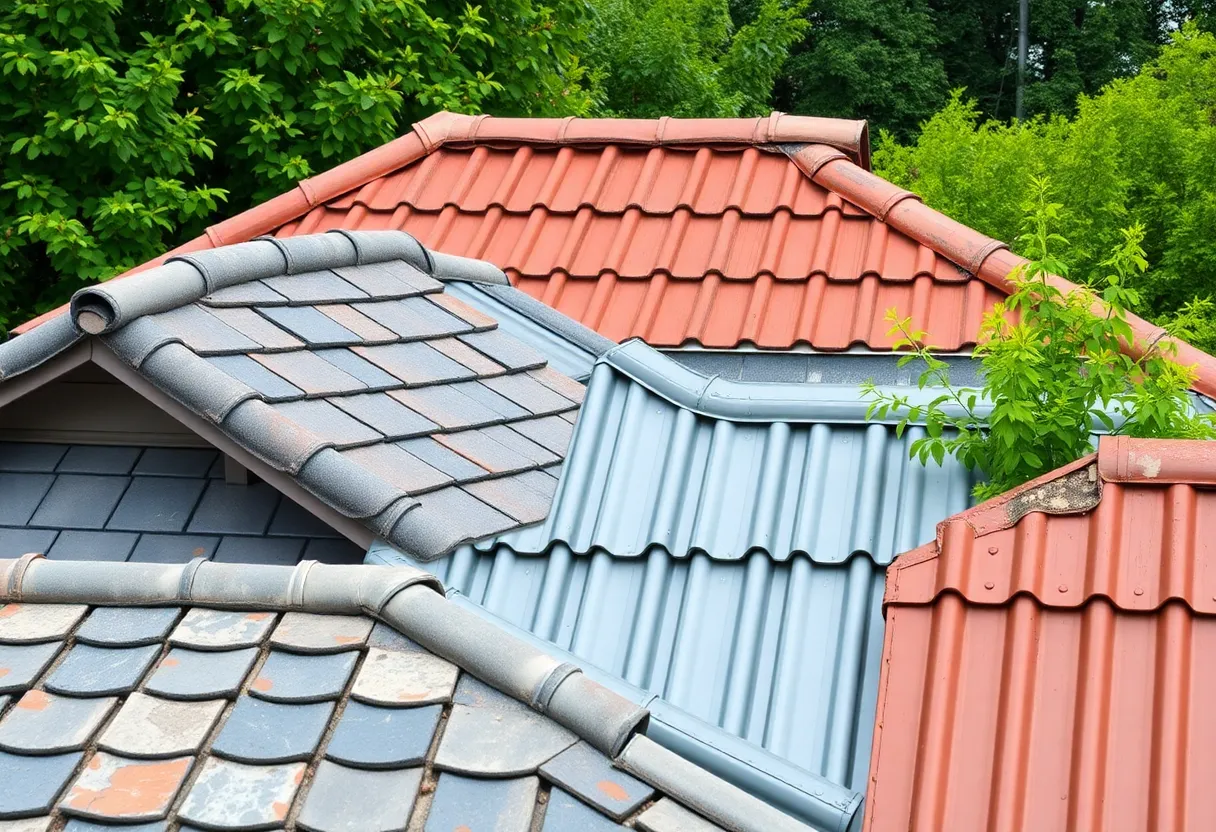What Are the Top Environmental Considerations When Choosing Roofing Materials?
Choosing the right roofing material is more than just an aesthetic decision; it involves a range of environmental considerations that can have a significant impact on sustainability and energy efficiency. Homeowners, builders, and architects alike must weigh factors such as durability, energy efficiency, recyclability, and the materials’ overall environmental footprint.
1. Sustainability of Materials
Sustainability is a buzzword that takes on many forms when it comes to roofing materials. The first step in assessing sustainability is to consider the source of the materials. Many roofing products are made from non-renewable resources, which can contribute to environmental degradation.
Natural vs. Synthetic Materials
Natural materials like slate, clay, and wood can be more sustainable options due to their ability to decompose and their generally lower environmental impact. However, harvesting natural materials must also be done sustainably to minimize ecological disruption.
Recycled Materials
On the other hand, synthetic materials such as metal and certain types of asphalt can incorporate recycled components. This not only reduces waste but also lessens the demand for virgin materials. Opting for roofing materials that contain recycled content is an effective way to improve sustainability.
2. Energy Efficiency
Another critical environmental consideration is the energy efficiency of roofing materials. Energy-efficient roofs help regulate indoor temperatures, thus reducing the need for heating and cooling systems.
Reflectivity and Insulation
Cool Roofing is a term often used to describe materials that reflect more sunlight than traditional options. This can dramatically lower summertime energy costs. Materials that have high reflectivity, such as certain types of metal roofs or white TPO roofing, can help keep buildings cooler and increase comfort.
Additionally, insulation plays a vital role in energy efficiency. Properly insulated roofs can prevent heat from escaping in the winter and reduce heat entry in the summer, leading to significant energy savings.
3. Longevity and Durability
The longevity of roofing materials not only affects economic costs but also environmental impacts over time. A longer-lasting roof reduces the frequency of replacements and the associated waste that comes with discarded materials.
Maintenance
Diverse materials have different maintenance requirements. For instance, slate roofs are highly durable and can last for over a century with minimal maintenance, while asphalt shingles generally require replacement every 15 to 30 years. Choosing materials with long lifespans can lessen the environmental impact associated with production and disposal.
Weather Resistance
Durability against weather elements is also crucial. Materials that can withstand hail, wind, and extreme temperatures tend to fare better over time, reducing the likelihood of costly repairs or replacements.
4. Lifecycle and End-of-Life Considerations
The entire lifecycle of a roofing material—from production to installation and eventual disposal—should be taken into account when making a choice.
Recyclability
Many materials can be recycled at the end of their life. Metal roofs, for example, can often be completely reclaimed and reused. In contrast, traditional asphalt shingles are less easily recycled and might end up in a landfill.
Biodegradability
Natural materials like wood can biodegrade, but considerations should be given to whether they are treated with chemicals that might slow down this process. Understanding how materials break down and their potential impacts can inform better choices.
5. Impact on Indoor Air Quality
The materials used for roofing can directly affect indoor air quality. Some roofing products off-gas volatile organic compounds (VOCs) that can lead to air quality issues inside the building.
Non-toxic Options
Choosing roofing materials labeled as low-VOC or free of harmful chemicals is essential for protecting indoor air quality. This is especially crucial in homes where occupants may have sensitivities or allergies.
Insulation and Ventilation
Proper installation of roofing materials, along with quality insulation and ventilation systems, can significantly improve air quality by preventing moisture buildup and allowing for better airflow.
6. Regional Climate Considerations
The local climate also plays a crucial role in the decision-making process for roofing materials.
Material Suitability
Some materials perform better in specific climates than others. For instance, clay tiles are well-suited for hot, dry climates, while asphalt shingles perform better in temperate zones.
Local Resources
Availability of local materials can have positive implications for both the environment and the economy. Sourcing materials locally reduces transportation emissions and supports local businesses.
7. Cost vs. Value
While initial costs are certainly a consideration, the long-term value of roofing materials must also be analyzed.
Initial Investment vs. Lifespan
More expensive materials might offer lower long-term costs due to their durability and energy efficiency. Weighing the upfront investment against potential long-term savings is essential for making an informed choice.
Insurance and Resale Value
Some roofing materials might also benefit from lower insurance rates due to their durability and long lifespan. Additionally, high-quality roofing can enhance a property’s resale value, making it an important investment in the long run.
Conclusion
Choosing environmentally responsible roofing materials requires careful consideration of numerous factors. From sustainability and energy efficiency to durability and recyclability, every aspect plays a significant role in reducing environmental impact.
By prioritizing options that meet both practical needs and ecological goals, homeowners and builders can contribute to a more sustainable future. Making informed choices in roofing material not only benefits the environment but can also lead to long-term cost savings and enhanced quality of life.





 Mays Contracting
Mays Contracting


